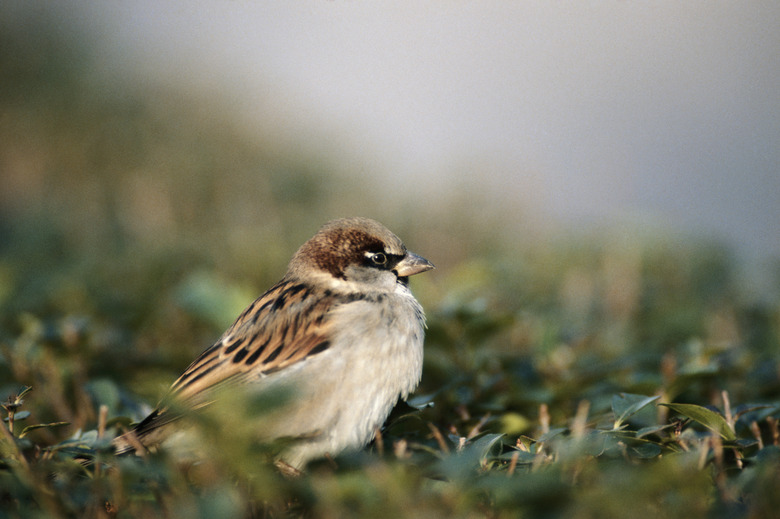How Far Apart Can You Plant Wax Myrtle?
A low-maintenance large shrub or small tree, the wax myrtle (Myrica cerifera) works well in the landscape as a single specimen or in mass as a screen or hedge. Its aromatic foliage repels insects while its late-summer berries attract birds. A properly spaced wax myrtle will achieve its mature height without causing any problems in your landscape.
Characteristics
Step 1
The wax myrtle produces an overall rounded habit consisting of glossy green foliage with a gray to yellow tint. Individual leaves reach lengths of 1 to 5 inches with a spread of only 1/2 to 1/3 inch, giving them a long, slender appearance. If broken or cut, the leaves emit a soft fragrance. Classified as a dioecious shrub, each specimen produces only female or male flowers that appear in late winter or early spring. Female blooms look like round, yellow balls and grow close to the stems. These flowers develop into dark purple berries coated in a white, waxy substance after pollination. Male flowers reach 1 inch in length and appear as yellowish-green, elongated spikes.
- A low-maintenance large shrub or small tree, the wax myrtle (Myrica cerifera) works well in the landscape as a single specimen or in mass as a screen or hedge.
- Classified as a dioecious shrub, each specimen produces only female or male flowers that appear in late winter or early spring.
Spacing
Step 1
A fast-growing woody evergreen, the wax myrtle may reach a mature height of 15 to 25 feet with an equal spread. The smaller cultivar, "'Fairfax" (Myrica cerifera "Fairfax"), only grows to a height and width of 4 to 5 feet, and the ground-cover version "Georgia Gem" (Myrica cerifera "Georgia Gem") grows to a height of 1 to 1 1/2 feet with a spread of 2 1/2 to 3 feet. Space the wax myrtle's trunk 25 feet away from the trunks of nearby plants, buildings and stationary objects in an area with 25 feet of open vertical space. Plant the "Fairfax" cultivar at a spacing of 4 to 5 feet in an area with at least 5 feet of vertical space, and "Georgia Gem" at a spacing of 2 1/2 to 3 feet.
Hedging
Step 1
Due to its rounded form and dense foliage, both the wax myrtle and its "Fairfax" cultivar work well when planted in mass, side-by-side, as a hedge. Typical plant spacing in a hedge equals one-third to one-half the plant's mature spread. Therefore, space each wax myrtle's trunk 7 1/2 to 12 1/2 feet apart. To plant a "Fairfax" wax myrtle hedge, space the trunks of the individual plants 2 to 2 1/2 feet apart. A smaller spacing will cause the wax myrtles to become overcrowded once they mature, resulting in poor health and fungal diseases due to poor air circulation.
- A fast-growing woody evergreen, the wax myrtle may reach a mature height of 15 to 25 feet with an equal spread.
- To plant a "Fairfax" wax myrtle hedge, space the trunks of the individual plants 2 to 2 1/2 feet apart.
Culture
Step 1
Along with the proper amount of space, a wax myrtle's planting site must meet certain cultural requirements. This woody, evergreen grows in U.S. Department of Agriculture plant hardiness zones 7 through 10. It prefers full to partial sunlight, meaning at least 4 to 6 hours of direct sunlight per day. The wax myrtle will thrive in any soil type, as long as it drains quickly and has a pH below 7.0. A suitable choice for roadsides or coastal areas, it readily tolerates salt spray and drought conditions.
